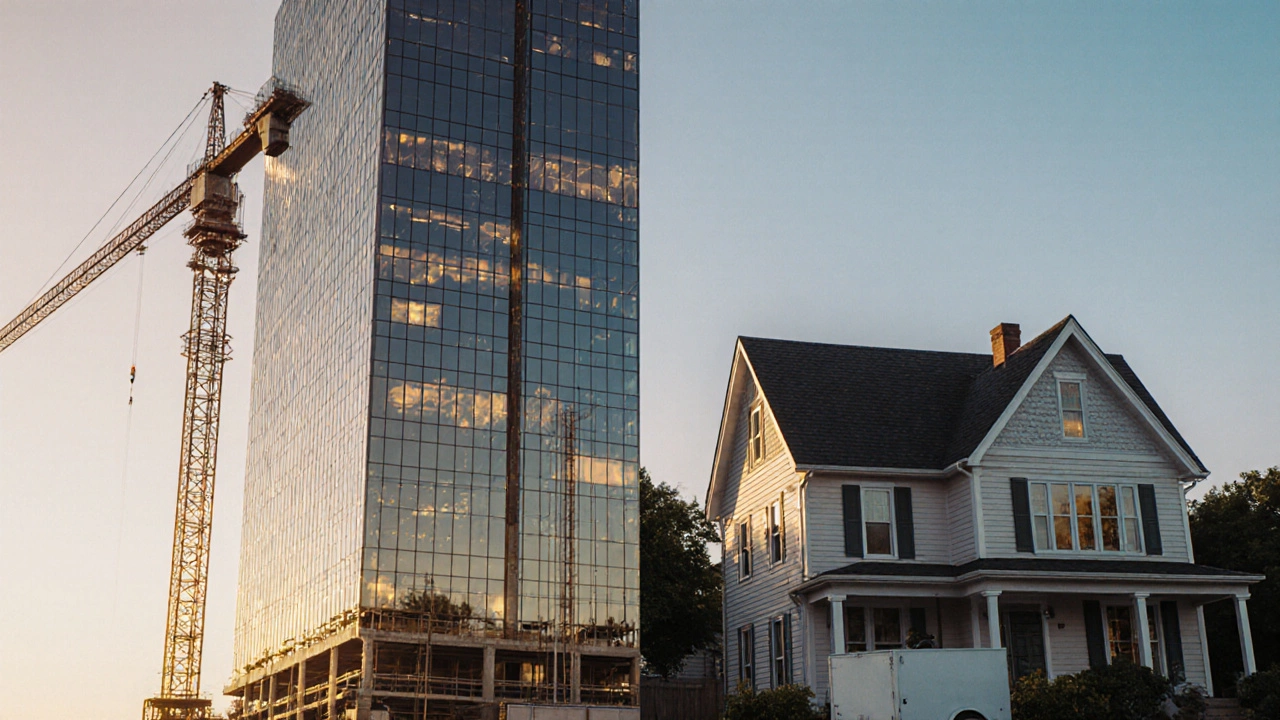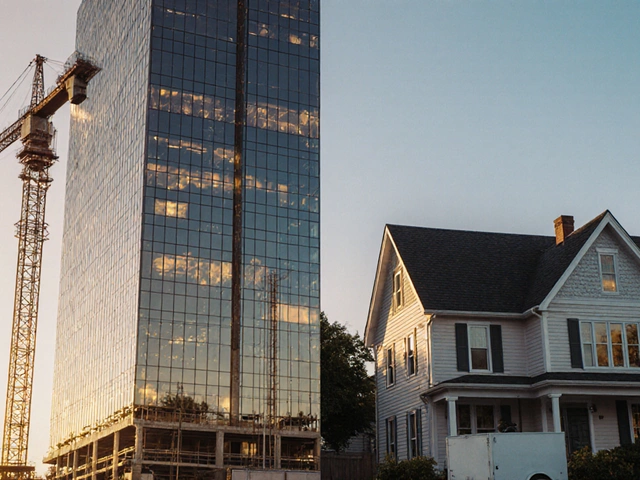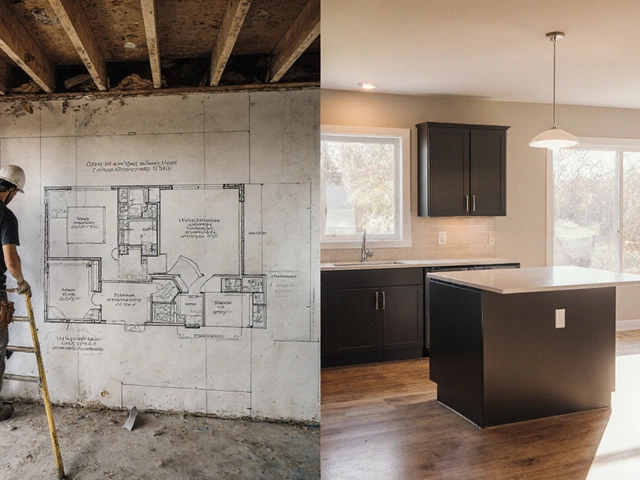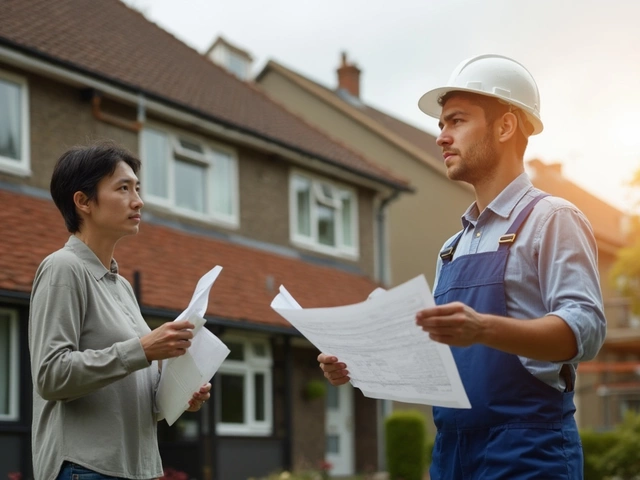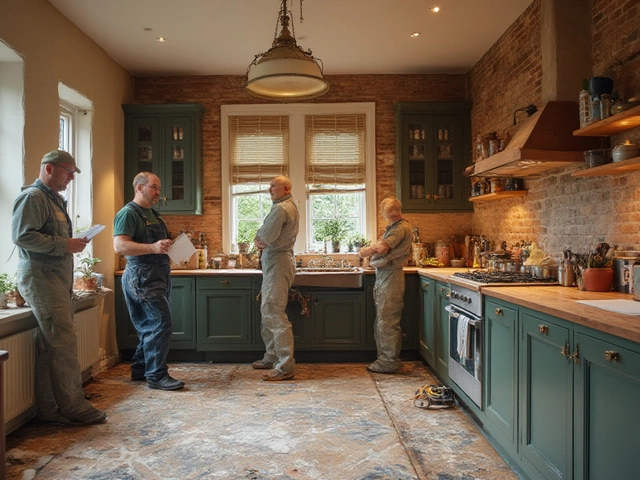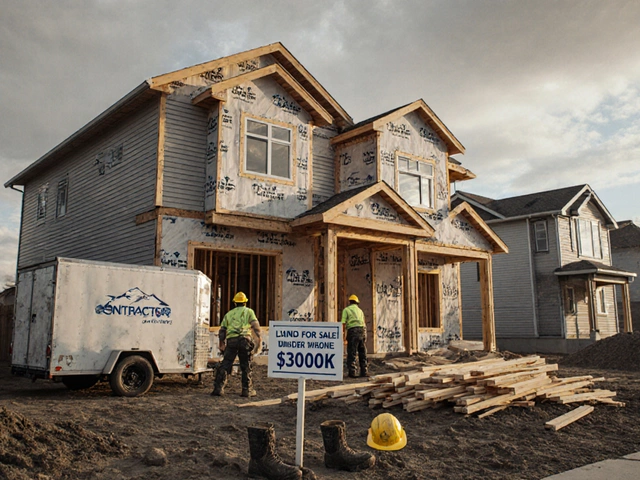Commercial vs Residential Construction Calculator
Typical Size: 5,000–200,000 SF
Cost/SF: $250–$350
Permitting: High complexity
ROI: 8–12% annually
Timeline: 12–18 months
Typical Size: 800–3,500 SF
Cost/SF: $150–$200
Permitting: Low complexity
ROI: 4–6% annually
Timeline: 4–6 months
Project Summary
Total Project Cost:
Annual Income:
Project Timeline:
Permitting Complexity:
Recommended Financing:
When you hear the words "commercial" and "residential," you instantly picture a skyscraper on one side and a single‑family home on the other. But which type of build actually makes more sense for your goals? Below we break down the major differences, weigh the pros and cons, and give you a practical checklist so you can decide if a commercial or residential project fits your budget, timeline, and long‑term plans.
Quick Takeaways
- Commercial projects usually deliver higher absolute ROI but demand larger upfront capital and stricter permitting.
- Residential builds are faster, face simpler zoning, and are easier to finance for first‑time investors.
- Cost per square foot is typically lower for residential, but total project size makes commercial more lucrative at scale.
- Both sectors require compliance with building codes, but commercial codes are more extensive.
- Choose based on your risk tolerance, financing options, and long‑term use‑case (rental income vs. personal or brand space).
Defining the Two Sides
Commercial construction is a type of building activity that creates structures intended for business use-offices, retail centers, warehouses, hotels, and mixed‑use developments. It typically involves larger floor plates, higher load capacities, and more complex mechanical systems. The goal is often to generate income through tenants or to support a company’s operations.
Residential construction refers to the creation of dwellings meant for people to live in, ranging from single‑family homes and townhouses to multi‑family apartments. These projects prioritize occupant comfort, livability, and aesthetic appeal. They can be built for personal use, for sale, or for renting out to families.
Key Decision Factors
To figure out which path is better, line up your project against the following metrics.
- Capital Requirements - Commercial builds need bigger down payments, often 20‑30% of total cost, because lenders view them as higher‑risk.
- Permitting & Zoning - Building permits are the official approvals you must obtain before construction begins. Commercial permits usually involve multiple agencies and longer review times due to fire safety, accessibility, and environmental impact studies. Residential permits are handled by a single local office and often clear in weeks.
- Cost per Square Foot - Construction cost per square foot varies by building type, finishes, and region. In 2025, average residential costs sit around $150‑$200SF, while commercial ranges from $250‑$350SF for basic office space and can exceed $500SF for high‑end retail or lab facilities.
- Return on Investment (ROI) - Return on investment measures the profit generated relative to the money invested. Commercial projects often yield 8‑12% annualized returns after stabilization, whereas residential rentals typically generate 4‑6%.
- Project Timeline - Project timeline covers design, permitting, construction, and lease-up phases. A 10,000SF office building might take 12‑18 months, while a 2,500SF single‑family home can be completed in 4‑6 months.
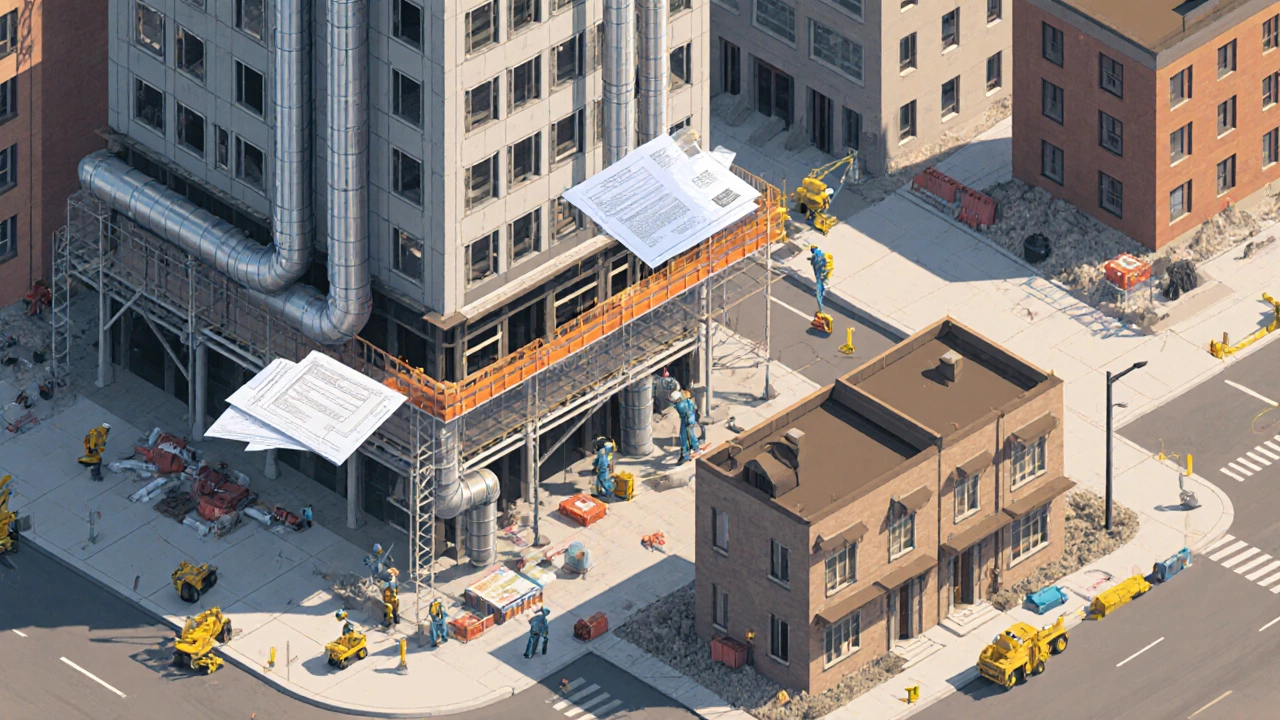
Side‑by‑Side Comparison
| Aspect | Commercial | Residential |
|---|---|---|
| Typical Project Size | 5,000-200,000SF | 800-3,500SF |
| Average Cost per SF (2025 US) | $250‑$350 | $150‑$200 |
| Permitting Complexity | High - multiple agencies, detailed fire/ADA compliance | Low - single‑office review, standard code check |
| Financing Options | Commercial loans, CMBS, private equity | Mortgages, construction loans, FHA/VA options |
| Typical ROI (post‑stabilization) | 8‑12% annual | 4‑6% annual |
| Design Flexibility | Moderate - must meet tenant fit‑out constraints | High - owner’s personal taste drives layout |
| Regulatory Burden | Stringent - Building codes include commercial fire, seismic, and accessibility standards. | Less intensive - residential codes focus on safety and habitability. |
| Construction Risk | Higher - market fluctuations affect tenant demand. | Lower - demand for housing remains relatively stable. |
When Commercial Construction Makes Sense
If you have access to substantial capital and want to build a revenue‑generating asset, commercial may be the better fit. Consider these scenarios:
- You're an investor targeting multi‑tenant office parks in growing tech corridors.
- You're a retailer needing a flagship store with brand‑specific design elements.
- You're a developer seeking to create mixed‑use towers that combine apartments with retail and office space.
In each case, the larger scale and higher rental rates can offset the steeper upfront costs and longer permitting cycles.
When Residential Construction Is the Smart Choice
Residential projects shine for those who value speed, lower capital barriers, and a more predictable market. Ideal situations include:
- First‑time home builders wanting a custom house for personal use.
- Small investors flipping single‑family homes in high‑demand suburbs.
- Developers focusing on multi‑family apartments where demand outpaces supply.
Because housing demand tends to be less cyclical than office space, residential projects often provide a steadier cash flow and quicker break‑even points.

Practical Checklist Before You Start
- Define your primary goal: income generation vs. personal use.
- Assess financing: commercial loans require higher equity and longer underwriting.
- Research zoning regulations that dictate whether a plot can host a commercial or residential building. Verify with the local planning department.
- Estimate total cost: multiply projected square footage by the appropriate cost per SF and add 10‑15% contingency.
- Plan the timeline: add 2‑3 months for residential permits, 4‑6 months for commercial approvals.
- Run a ROI model: factor in expected rent, vacancy rates, operating expenses, and financing costs.
- Consider sustainability: both sectors can benefit from energy‑efficient HVAC, but commercial projects often qualify for larger tax credits.
- Engage a qualified architect or contractor experienced in your chosen building type.
Common Pitfalls and How to Avoid Them
Under‑budgeting - Many builders use residential cost benchmarks for commercial projects, leading to surprise overruns. Use the commercial cost per SF range and add a contingency.
Ignoring market research - A premium office space in a declining sub‑market can sit vacant for years. Conduct a thorough demand analysis before committing.
Skipping code reviews - Commercial projects must meet stricter fire suppression, egress, and accessibility standards. Involve a code consultant early to prevent rework.
Poor financing structure - Over‑leveraging a commercial loan can squeeze cash flow during lease‑up. Opt for a tiered financing plan that releases funds as milestones are hit.
Conclusion: Which Is Better?
The answer isn’t a one‑size‑fits‑all. If you have the capital, appetite for longer timelines, and a clear tenant pipeline, commercial vs residential construction tips point to commercial as the higher‑return play. If you need speed, lower entry costs, and a market that’s less sensitive to economic swings, residential is the safer bet. Map your goals, run the numbers, and let the checklist guide you to the right decision.
Frequently Asked Questions
What are the main cost drivers for commercial construction?
Key drivers include higher structural loads, advanced HVAC and fire‑suppression systems, larger concrete foundations, and extensive IT infrastructure. These elements push the cost per square foot above typical residential rates.
Do residential projects require the same building codes as commercial?
Both must meet the International Building Code (IBC) and local amendments, but residential codes focus on habitability, fire safety for dwellings, and energy efficiency. Commercial codes add layers for accessibility (ADA), fire protection, and seismic design.
How long does it typically take to obtain a commercial building permit?
Depending on the jurisdiction, the process can take 2‑4 months, especially if environmental impact studies or fire‑life safety reviews are required. Residential permits often clear in 3‑6 weeks.
Which type of construction offers a faster ROI?
Residential projects generally achieve cash flow quicker because they can be sold or rented out within months of completion. Commercial ROI, while higher in percentage, usually takes 12‑24 months to stabilize due to longer lease‑up periods.
Can I convert a residential building into a commercial space?
Conversion is possible but requires a zoning change, new permits, and compliance with commercial building codes. The process can be costly and time‑consuming, so evaluate the financial upside before proceeding.
